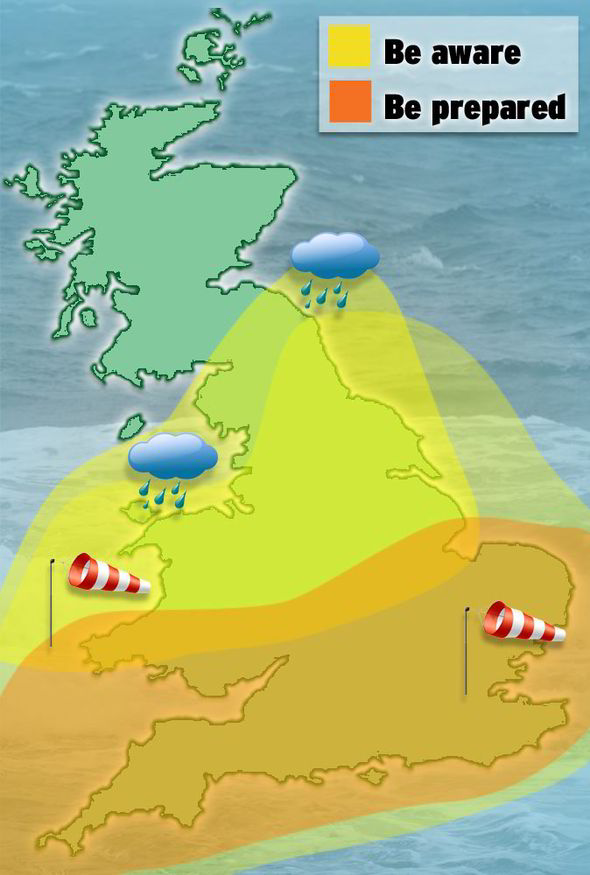The press called it a Megastorm, the Storm of the Century and the Great Storm, but residents in the Midlands and the North were left wondering what all the fuss was about. So, what happened to the Great Storm of 2013?

The sea wall at Dawlish during a storm
The media soon picked up on this story, and some irresponsible journalism soon led to more and more outlandish headlines appearing on the front pages. Television joined in on the act and the Great Storm of 2013 was born.
In the Midlands, residents were told to batten down the hatches and prepare emergency kits as the storm was expected to produce hurricane force winds overnight Sunday (27th) and into Monday (28th). The story, and the storm, developed alongside each other in the days leading up to the event.

The Met Office weather warnings for Monday 28th October.
As the storm made landfall in Cornwall on Sunday, pressure charts started to show that the ‘eye’ of the storm would track across the Midlands, bringing light winds to the north of the storm system and 100 mph winds to the south. This is exactly what happened later in the day.
Wind gusts measured by the Bracken House Weather Station highlighted gusts peaking at 36.8 mph at 11:33 on Sunday. From then on, winds started to abate, falling to an average wind speed of 10 mph after nightfall. This was when the ‘eye’ of the storm passed over the region. The barometric pressure at this time fell to a 2013 low of 977.7 millibars.
After the eye had passed over, moderate rainfall started and around 10 millimetres fell in a 12 hour period overnight Sunday and into Monday. Winds started to increase again, peaking at a maximum of 26.5 mph at 14:30.
The Southerners weren’t so lucky. A wind gust of 99 mph was recorded at the Needles on the Isle Of Wight, and scores of flights and train services were disrupted by fallen trees and high winds. Four people lost their lives.
Damage and loss of life was restricted to the southernmost parts of the country, but that didn’t stop the media giving in blanket coverage. Weather sells newspapers and boosts viewing figures, and while ever this is the case, we can look forward to the hype continuing.
Related articles
- Britain Braced For Severe 80mph Storm (news.sky.com)
- Worst storm in decade lashes Britain, France (newsinfo.inquirer.net)
- ‘Hurricane’: UK Will Take Full Force Of Storm (news.sky.com)
- UK braces for St Jude’s Day Storm, set to leave trail of destruction with hurricane-strength winds (belfasttelegraph.co.uk)
- Worst weather since the Great Storm of 1987? UK braces for hurricane-strength winds (independent.co.uk)
- Hurricane-strength wind warnings extended to Midlands (telegraph.co.uk)
- At least two dead as storm lashes UK (skynews.com.au)
- Stay in bed to avoid St Jude storm, says Michael Fish (thetimes.co.uk)
- Britain Braced For Severe 80mph Storm (news.sky.com)
- UK weather: Michael Fish warns people to “batten down the hatches” as freak storm heads for Britain (mirror.co.uk)
- MEGASTORM: Power cuts and travel chaos will leave Britain with £1billion bill (express.co.uk)
